
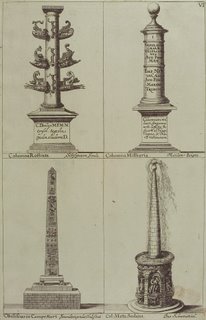
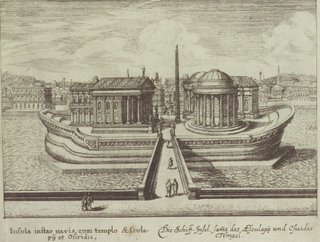



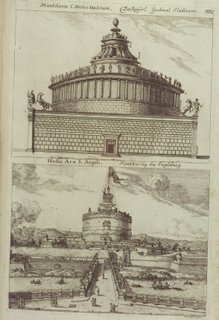
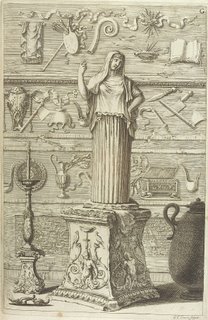

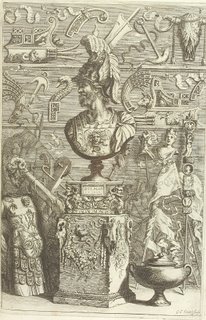


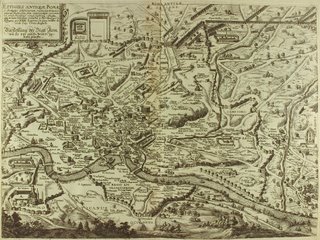 [click images for larger versions]
[click images for larger versions]
In his time Joachim von Sandrart (1606-1688) was the most famous artist in Germany. He trained in engraving and painting and travelled extensively in Italy and England and was accompanied by Peter Paul Rubens on a tour of Holland.
Although he concentrated on portrait painting, he is best remembered for his art history writings, chief among them being a 2 volume work:
Der Teutsche Academie der edlen Bau-, Bild- und Mahlerey-Künste
('German Academy of the Noble Arts of Architecture, Sculpture and Painting') -- usually known as 'Teutsche Academie'; published between 1675 and 1683.
"The Teutsche Academie is an illustrated compendium of art education and of artist biographies compiled from a variety of sources as well as descriptions of Roman antiquities, inventories of famous private art collections and libraries"It remains a significant primary art history source mostly because of the original material included about Sandrart and his contemporaries. Beyond the artistic and architectural illustrations, Teutsche Academie has large numbers of medallion engraving of Gods, artists and philosophers and includes a german translation of Ovid's Metamorphoses.
The University of Heidelburg has what appears to be the complete work divided into 9 or 10 website sections. There are no thumbnails unfortunately so it is a laborious task flicking through them all for signs of outlandish baroque illustrations between the extensive text. There must be around 250 engravings in total. It took me a long time to cull down the 40 or so images I had saved. The top picture reminds me of Boillot/Sambin and 2 of them near the centre seem to be depictions of Wunderkammer. The final image is a map of










































4 comments :
The last image is merely a depiction (= Lat. effigies) of ancient Rome (Romae antiquae). The German below it reads, "Vorstellung der Statt Rom, wie sie vor alten Zeiten gebaut gewesen [ist]," or "Depiction of the city of Rome, as it had been built in ancient times." No effigies to speak of.
Thanks for that. You are showing up my laziness! I kind of saw that label top-left, noted the 'vivarium' in the map was one of the things depicted; and actually felt that 'effigy' was an unusual word in the circumstances.
Cheers!
My pleasure! I enjoy your posts very much. Best, Th.
Nice post !!!
Post a Comment
Comments are all moderated so don't waste your time spamming: they will never show up.
If you include ANY links that aren't pertinent to the blog post or discussion they will be deleted and a rash will break out in your underwear.
Also: please play the ball and not the person.
Note: only a member of this blog may post a comment.